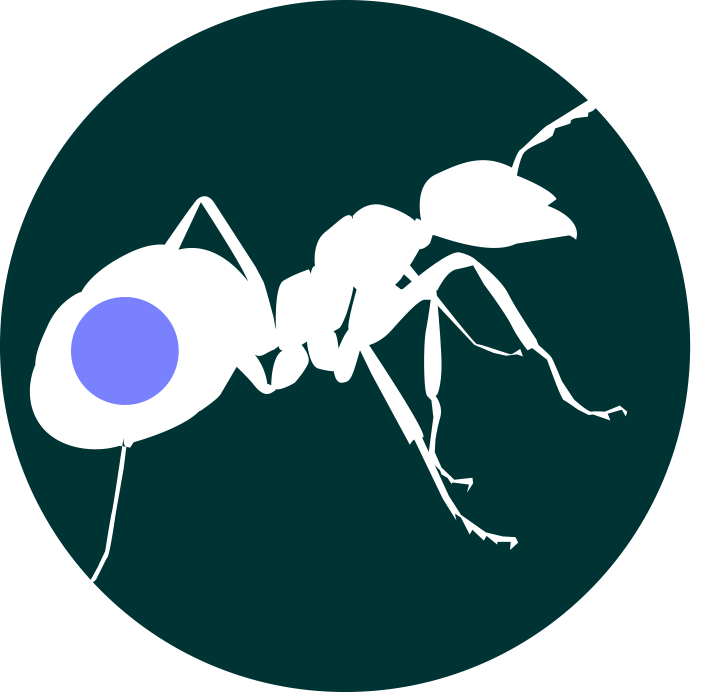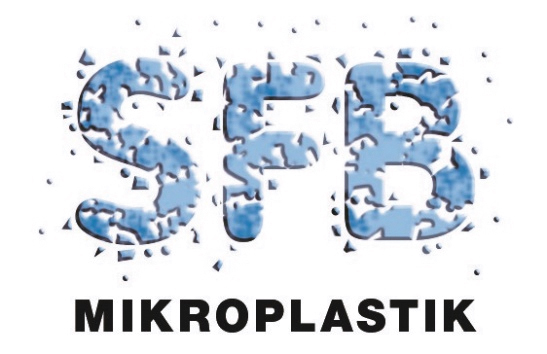A-Projekte

Biologische Effekte
A01: Effekte von Mikropartikeln auf aquatische Modellmakrofauna in Abhängigkeit von Partikeleigenschaften: Vergleich von Mikroplastik zu natürlichen Partikeln
A01 adressiert im SFB 1357 die Frage, welche Eigenschaften chemisch komplexer und realitätsnaher Mikroplastik (MP)-Partikel die Effekte auf limnische Modellorganismen im Vergleich zu Referenzpartiklen, die natürlich vorkommenden Partikeln sowie dem verwendeten MP in ihren Eigenschaften ähneln, bedingen. Für diese systematischen Effektstudien werden die Auswirkungen von MP auf fitnessrelevante Lebenszyklusmerkmale sowie auf molekularer Ebene (Transkriptom, Proteom, Mikrobiom) tiefgehend analysiert, um die Mechanismen, die den Effekten zugrunde liegen, zu entschlüsseln. Da die 1. FP weiterhin gezeigt hat, dass MP vorwiegend subletale Auswirkungen hat und Einfluss auf biotische Interaktionen haben kann, welche aber im ökologischen Kontext zu weitreichenden Effekten führen könnten, werden diese bei Daphnia anhand von Räuber-Beute und Wirt-Parasit-Interaktionen sowie in Mesokosmenstudien untersucht. In Kombination mit den molekularen Analysen der Modellorganismen, können so erstmals die von den physikalischen und chemischen Eigenschaften abhängenden Wirkmechanismen der Effekte in einem breiteren ökologischen Kontext betrachtet werden.
Teilprojektleitende: Prof. Christian Laforsch, Dr. Thomas Fröhlich
A02: Auswirkungen von Mikroplastikpartikeln auf bodenlebende terrestrische Modellmakrofauna und deren assoziierte Mikrobiota
Im Projekt A02 sollen die Auswirkungen der Ingestion von Mikroplastik (MP) -Partikeln an zwei terrestrischen Modellorganismen, dem im Boden lebenden und Substrat-fressenden Kompostwurm Eisenia fetida sowie der Boden-nistenden omnivoren Ameisenart Camponotus floridanus, untersucht werden. Ziel ist es eine systematische Untersuchung der Effekte von MP der am weitesten verbreiteten und damit umweltrelevanten Kunststoffsorten mit unterschiedlichen Morphologien, Größe und Konzentration der Partikel mit zwei terrestrischen Modellorganismen durchzuführen, um die Wirkmechanismen besser verstehen zu können. Sowohl für E. fetida als auch C. floridanus soll untersucht werden, inwieweit sich diese Modell-MP-Partikel mit ihren unterschiedlichen physikalisch-chemischen Eigenschaften auf die Fitness der Modellorganismen auswirken, und zwar sowohl auf phänotypischer Ebene (Mortalitätsrate, Anzahl Nachkommen) als auch auf Transkriptom-, und Proteomebene untersucht werden, um sublethale Stress- oder Immunreaktionen charakterisieren zu können. Zudem sollen mögliche Effekte von MP auf die Aktivität und Diversität des Darmmikrobioms und der Bereitstellung mikrobiell produzierter Gärungsprodukte und anderer Metabolite für den Wirt untersucht werden, denn solche Veränderungen könnten den Wirt indirekt beeinflussen. Wir erwarten, dass die Wirkmechanismen und biologischen Effekte von den chemisch-physikalischen Eigenschaften sowie der Morphologie der MP-Partikel abhängen.
Teilprojektleitende: Prof. Heike Feldhaar
A03: Charakterisierung molekularer und histologischer Effekte von Mikroplastik in Gewebe(schnitten) aquatischer und terrestrischer Modellorganismen
A03 untersucht im SFB 1357 Veränderungen im Gewebe terrestrischer und aquatischer Modellorganismen, verursacht durch chemisch komplexe und realitätsnahe Mikroplastik (MP)-Partikel. In der 1. Förderperiode (FP) wurden weitreichende methodische Fortschritte erzielt, wobei die bildgebende Massenspektrometrie (MS Imaging) mit komplementären Methoden, insbesondere Raman und FTIR Imaging kombiniert wurde. Durch die Verknüpfung dieser Daten mit der Histologie im selben Schnitt, können morphologische und molekulare Veränderungen direkt miteinander korreliert werden und dadurch Rückschlüsse auf die unterschiedlichen Prozesse und Wirkmechanismen von MP mit unterschiedlichen physikalischen und chemischen Eigenschaften gezogen werden. In der 2. FP wird das Methodenspektrum nochmals erweitert, z.B. durch Tissue Clearing, die direkte Analyse von Proteinen und Verfahren mit höherer räumlicher Auflösung. Zusätzlich zu Gewebeschnitten werden nun auch Zellen und Gewebemodelle untersucht. A03 stellt damit das Bindeglied zwischen den organismischen (A01, A02, A06) und zellulären (A04, A05) Teilprojekten dar.
Teilprojektleitende: Prof. Christian Laforsch, Prof. Andreas Römpp
A04: Zelluläre Aufnahme von Mikroplastik in Abhängigkeit von elementaren Partikeleigenschaften
A04 analysiert im SFB 1357 die Interaktion von Mikroplastik (MP) mit Zellen in Abhängigkeit von physikalischen und chemischen Partikeleigenschaften (u.a. Eco-Corona, ς-Potential, Oberflächenmechanik, Partikelform und Additivierung) sowie die wechselseitige Beeinflussung dieser Eigenschaften (z.B. den Einfluss der Eco-Corona auf das ς-Potential). Um realitätsnähere Partikelformen und Zellen zu untersuchen, werden unsere Studien hierbei auf Fasern und irregulär geformte Partikel sowie Primärzellen aus aquatischen und terrestrischen Organismen ausgedehnt. Als Methoden kommen u.a. Flusskammern, optische Pinzetten und Modellpartikel mit Polyelektrolyt-Multilagen-Beschichtungen zum Einsatz.
Teilprojektleitende: Prof. Holger Kress, Prof. Andreas Fery, Prof. Christian Laforsch, Dr. Günter Auernhammer
A05: Auswirkungen von Mikroplastik-Interaktionen auf zellulärer Ebene
A05 untersucht im SFB 1357 die Effekte von Mikroplastik (MP) auf Zellen und Mikrogewebe. Während in der 1. Förderperiode (FP) vor allem Einzelzellen im Fokus standen, wird in der 2. FP mit zunehmend komplexeren Systemen gearbeitet. Hierbei werden Epithelgewebe(-Mimetika) und Makrophagen in hierarchisch organisierter und polarisierter Form (Transwell-Kulturen, Sphäroide) eingesetzt. Die Experimente mit Primärzellen der im SFB 1357 etablierten Modellorganismen werden ausgeweitet und auf die am jeweiligen Organismus beobachteten Effekte bezogen. So ergibt sich in der 2. FP die Möglichkeit die Lücke zwischen zellulärer und organismischer Reaktion zunehmend zu schließen.
Teilprojektleitende: Prof. Ruth Freitag, Prof. Thomas Scheibel
A06: Mikroplastik in der Rhizosphäre von Nutzpflanzen – Wirkung auf physikalische, chemische und mikrobiologische Prozesse im Boden
A06 beschäftigt sich im SFB 1357 mit den Auswirkungen von chemisch komplexen und umweltrelevanten Mikroplastik (MP)-Partikel im System Boden–Mikroben–Pflanze mit speziellem Fokus auf Änderungen der Bodenaggregation, der Bodenchemie und der Bodenmikrobiologie in der Rhizosphäre von Nutzpflanzen. Aufbauend auf die 1. Förderperiode (FP) adressiert das Teilprojekt die Frage, welche Eigenschaften von umweltrelevantem MP zu Veränderungen in der Rhizosphäre führen und wie sich diese auf die entsprechenden Pflanzen wie Mais und Erdbeeren auswirken. Dabei legt das Teilprojekt verstärkt Wert auf den Vergleich von konventionellem MP mit bioabbaubaren Kunststoffen, deren Wirkung auf die Bodenchemie und die Bodenmikrobiologie erheblich größer sein könnten. Aus der 2. FP werden zudem Erkenntnisse erwartet, die zur ökotoxikologischen Bewertung von MP für Mikroorganismen in Böden und daher indirekt für Pflanzen beitragen. In einem SFB-übergreifendem Bodenmesokosmen-Experiment werden Fragestellungen aus den Projektbereichen A, B und C im Rahmen der Querschnittsthemen „Migration-Expositionswahrscheinlichkeit“ und „Effekte-Alterung“ an der Schnittstelle Boden untersucht.
Teilprojektleitende: Prof. Eva Lehndorff, Prof.Tillmann Lüders

